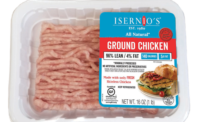Economic losses due to beef discoloration in the U.S.
Study suggests 2.55% of beef was discarded due to discoloration.

This research is published in Meat and Muscle Biology journal, and the full paper can be accessed by clicking the link https://doi.org/10.22175/mmb.13218 (Ramanathan, R., L.H. Lambert, M.N. Nair, B. Morgan, R. Feuz, et al. (2022). Economic loss, amount of beef discarded, natural resources wastage, and environmental impact due to beef discoloration. Meat Muscle Biology. 6(1): 1–8)
Beef color is an important sensory attribute that influences purchasing decisions. Consumers prefer a bright red color, and any deviation from a bright red color leads to less acceptance. Discoloration of beef results in a discounted price, or the product is discarded. Hence, quantifying economic loss and the amount of beef discarded is vital to develop strategies to minimize their losses and maximize the sustainability of cattle production.
The objective of the study was to determine economic losses and the amount of beef discarded or sold at a discount. One-year data of total beef sales, total beef discarded, and discounted sale values during 2020 were collected from two national retail chains and one regional retail chain. The two retail chains were located throughout the U.S., and the one regional retail chain was located in Southern U.S. The data collected in the study came from 5,034 stores and 44 states. The total retail sales details from the U.S. Department of Agriculture Economic Research Service database were used to estimate the economic impact and the amount of discolored beef discarded at the national level. The total beef sales from two major retail chains and one retail store for the one year was approximately 1.16 billion pounds. The total retail beef sold in the U.S. during 2020 was 19.2 billion pounds. The current study captures all geographical regions (44 states) and approximately 6.5% of total retail sales in the U.S. The authors are not aware of the impact of the pandemic on the data collected. However, based on the USDAS ERS, there was no major impact on total retail beef produced during 2019-20.

In the current study, 2.55% of beef was discarded due to discoloration. Beef starts out bright red, and when discoloration occurs, the consumer first sees small areas of the meat have turned from red to brown, and eventually, the whole cut turns. In general, steaks and roasts will start to discolor in 5-7 days, and ground beef will start to discolor in 2-3 days under retail conditions and PVC overwrap packaging. As the meat begins to discolor, discounting is often necessary to market the product and avoid a total loss successfully, but each retailer establishes the discount level for discolored beef, and there is no reference to the appropriate discount level. Estimating this loss to the annual retail beef sales in the US, the beef industry loses $3.73 billion annually due to discoloration. In addition, 428 million pounds of nutritious beef is discarded due to discoloration, corresponding to 780,000 cattle wasted. The results suggest the importance of beef color and how consumer perception of quality can lead to meat loss. Therefore, developing strategies and improving awareness are vital to minimize the losses due to discoloration.
Email corresponding author Ranjith Ramanathan at ranjith.ramanathan@okstate.edu.
Looking for a reprint of this article?
From high-res PDFs to custom plaques, order your copy today!





